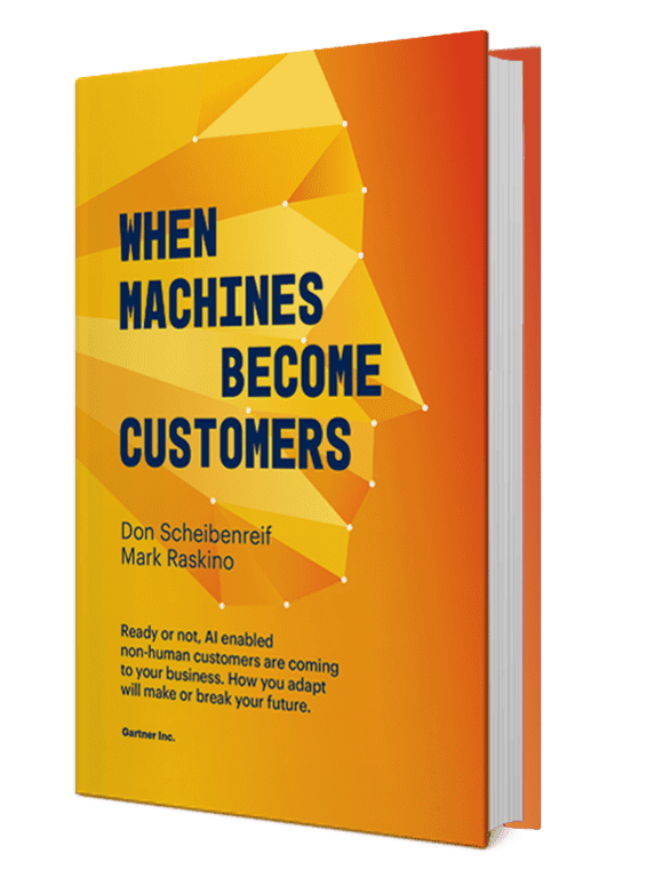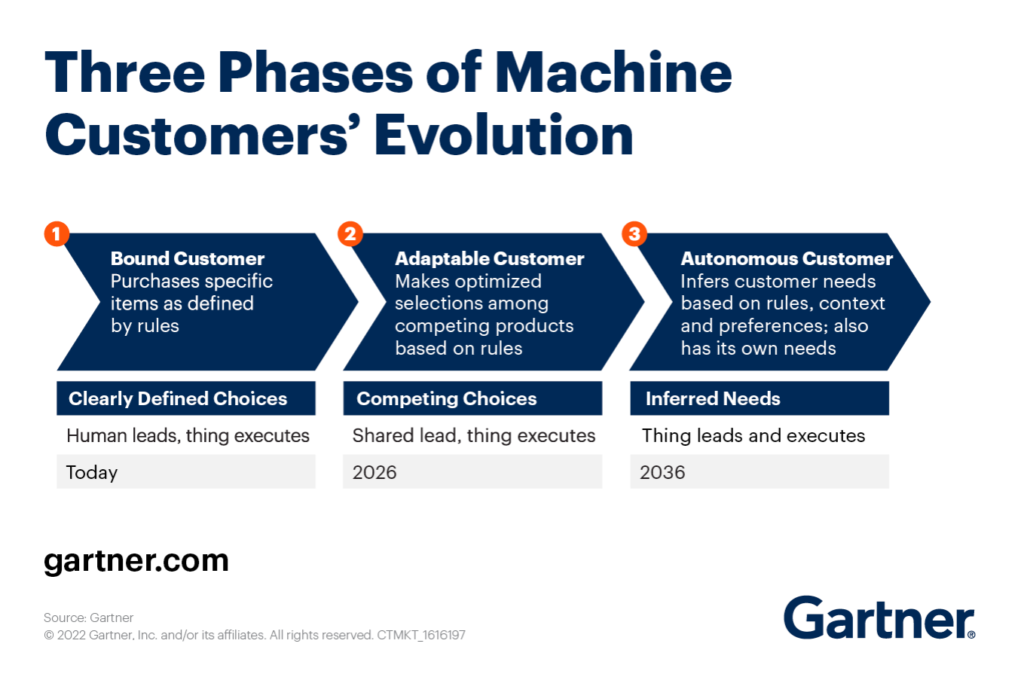Machine customers represent one of the biggest new growth opportunities of the decade, and business leaders must act now to create a path to entry to a business megatrend that will eventually be more significant than the arrival of digital commerce, according to Gartner, Inc.
A machine customer is a non-human economic actor who obtains goods and/or services in exchange for payment.
In the new Gartner book, When Machines Become Customers, authors Don Scheibenreif, distinguished VP analyst at Gartner and leader of Gartner’s research on customer experience, and Mark Raskino, distinguished VP analyst, Gartner Fellow and leader of Gartner’s CEO research, explain that machine customers will be involved in a wide range of consumer and business purchases. In the book, they anticipate and unpack key challenges and opportunities for organizations, and how these organizations should tackle them.
"The machine customer era has already begun," said Scheibenreif. "There are more machines with the potential to act as buyers than humans on the planet. Today, there are more than 9.7 billion installed IoT devices, including equipment monitoring, surveillance cameras, connected cars, smart lighting, tablets, smartwatches, smart speaker and connected printers. Each of these has a steadily improving ability to analyze information and make decisions. Every IoT enabled product could become a customer. In fact, Gartner predicts that by 2027 50% of people in advanced economies will have AI personal assistants working for them every day."

Executives across the enterprise must collaborate to prepare for machine customers. This ranges from legal officers (general counsel) who will need to dig into definitions and start framing what risk-managed ways the company can engage commercially, to CIOs who must lead the construction of the platforms capable of serving machine customer markets, to marketing officers who must reconceptualize what a customer is and how to understand machine customer needs. HR officers, supply chain officers and revenue officers, like the head of sales, will also need to consider how machine customers will impact their organizations.
Machine Customer Evolution in Three Phases
Today, is the first phase of the machine customers’ evolution, which can be seen in services such as HP Instant Ink, Amazon Dash Replenishment and Tesla’s automobiles. These are examples of automatically performing limited functions as "co-customers" on the owner’s behalf. People set the rules, and the machine executes them within a specific and prescribed ecosystem. These machines are therefore "bound customers", and they represent the first in a three-phase evolution (see Figure 1).
Figure 1:

"In the second, emerging phase, people still set the rules for machines as ‘adaptable customers’, although AI technology can choose and act on behalf of a human with minimal intervention for select tasks," said Raskino. Examples include robotrading and autonomous vehicle systems.
In the final phase, these new economic actors are "autonomous customers". They have enough intelligence to act independently on behalf of humans with a high degree of discretion and own most of the process steps associated with a transaction.
"What the machine customers from each phase have in common is that they will make decisions differently from humans in three ways," said Scheibenreif. "They are logical and will make decisions based on rules that may or may not be transparent. Second, they can also process large amounts of information. Lastly, machines focus on completing tasks efficiently and without emotion, and they can’t be influenced by being ‘wine and dined.'"
When Machines Become Customers is available now exclusively on Amazon. A sample chapter of the book can be downloaded here. For other books by Gartner analysts, please visit www.gartner.com/books.


